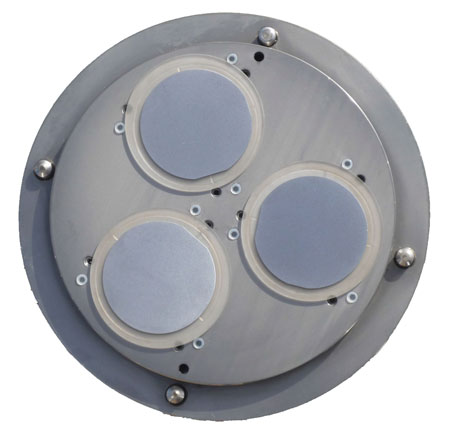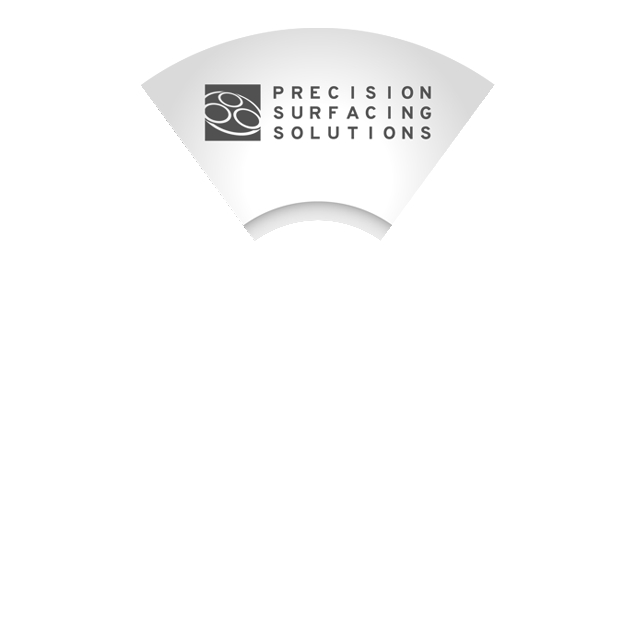Diamond Stops & Diamond Stop Setting Fixtures

The purpose of using a diamond stop fixture is to control the finished thickness and parallelism of thin fragile components, typically thin wafers and slabs of semiconductor, electronic and electro-optic substrates. A diamond stop fixture consists of a round block of stainless steel with three or more vertically adjustable diamond-tipped threaded screws extending from a lapped and polished face that is used to mount thin, fragile components. Components are mounted using low melting point wax or vacuum in the case of specially equipped vacuum type diamond stop fixtures. The extended height of the diamond stop above the polished face of the fixture body determines when the mounted components will no longer have pressure exerted on them during the lapping process.
When the diamond stops contact the lap plate stock removal virtually ceases except for a small amount of erosion naturally caused by liquid slurry circulating underneath the components. A certain amount of experience in process development will help determine the additional diamond stop height to accommodate the stock removal from erosion occurring after the diamond tips contact the lap plate. The fixture must be removed from the machine as soon as all the diamonds contact the plate. No damage to the plate or diamond tip surface will occur with minimal contact.
Standard wax type fixtures are designed to fit inside the conditioning rings of the Lapmaster machines through the Model 36. The fixtures are equipped as standard with long diamond stops that have a knurled extension above the fixture for finger adjustment. Special short diamond stops with an Allen key socket are available for conditions when a pressure plate will be stacked on the fixture to apply additional weight. The stop is short enough to be completely contained in the fixture body.

Lapmaster offers a setting stand for each of the fixture sizes. The stand allows the fixture to be held inverted while the dial indicator type setting gauge is used to measure the extended height of the diamond tips.

How the Diamond Fixture Functions
In most cases, the Diamond Stop Fixture is used during the lapping process in order to thin parts to controlled thickness and parallel values
- The Diamond Tipped Studs (diamond stops) act as mechanical stops to control finished thickness. Depending on the application requirements, 3 to 5 diamond stops are used on a fixture.
- The diamond content of the stud is an inserted diamond that is somewhat spherical shaped to prevent digging into the lap plate.
- The height of the diamond stops is set with a gage which is “zeroed” on the diamond stop fixture. The stops are normally set at a height value of the desired finished thickness (above zero), less the “fudge factor” (film of mounting material & air gap)
- Parts to be lapped must be firmly anchored to the fixture using wax or vacuum
- Lapping abrasives are restricted to the types which will not attack or otherwise compromise the diamond tips












